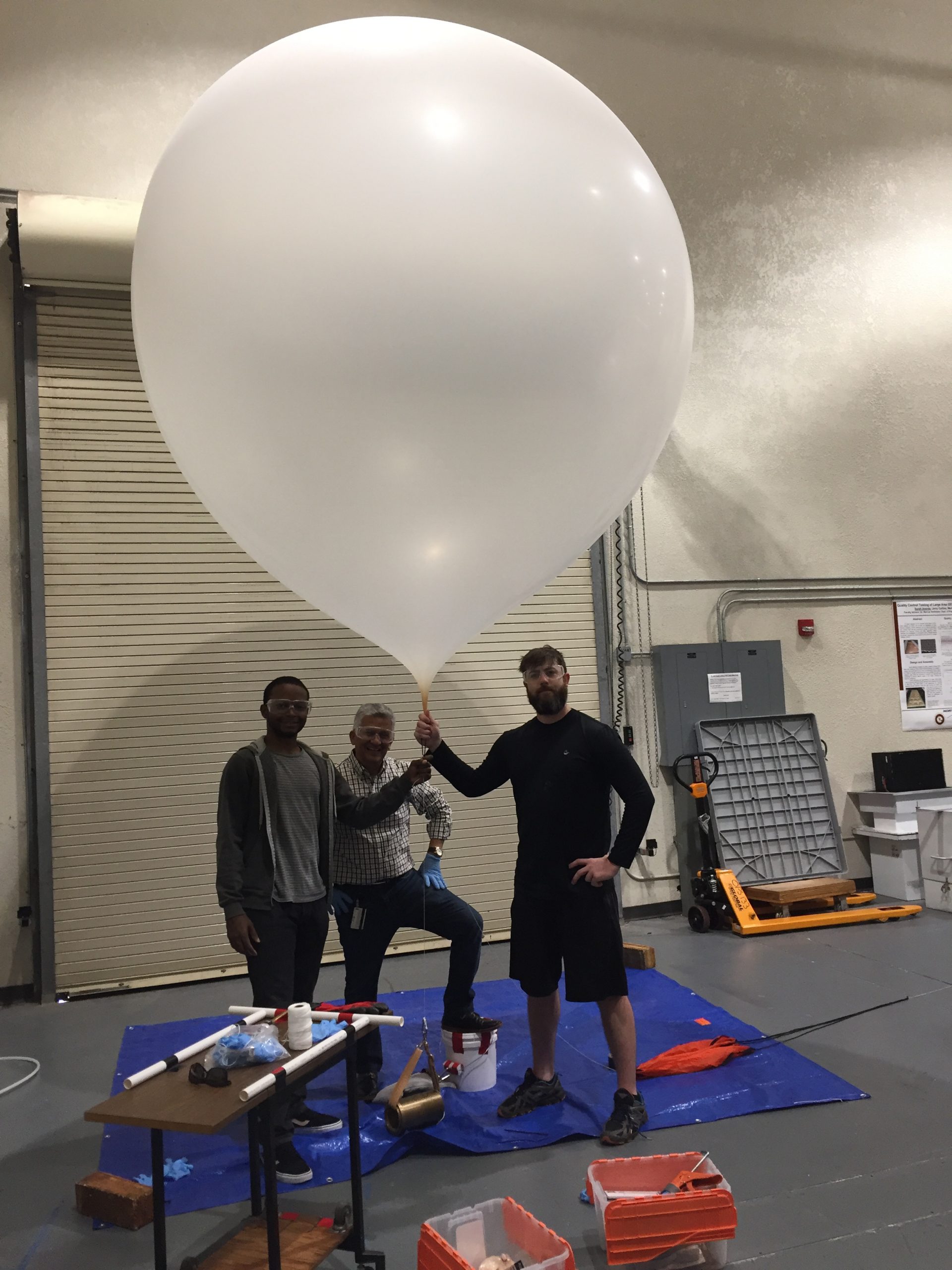Sending Balloons Into The Storm
There are about 25 million lightning strikes in the United States annually, according to the Florida Division of Emergency Management, and an average of 1.2 million cloud-to-ground lightning strikes in Florida each year.
Unlike the lightning itself, the results of these strikes last longer than the blink of an eye: $4 billion to $5 billion in damages and work losses nationwide.
Yet much about lightning remains a mystery. So seeking to learn more with an eye toward reducing this pervasive threat, Florida Tech faculty in collaboration with their students and colleagues from other institutions are measuring and analyzing lightning signatures. The ultimate goal of their research is to protect operations, communications, assets and personnel from the danger of lightning strikes by better understanding this powerful natural phenomenon.
(In the last two decades, the team has made six fundamental discoveries in understanding the mysteries of lightning. Using various remote sensing techniques and sensors, they determined that lightning emits bright bursts of X-rays; thunderstorms emit bright bursts of gamma-rays; and thunderstorms are capable of generating “dark lightning” – a new form of atmospheric electrical discharge. They also determined thunderstorms can eject beams of high energy electrons/positrons into space; a single thunderstorm is capable of making multiple forms of upward lightning discharges; and laboratory sparks emit X-rays similar to those from lightning.)
Since 2017, they focused on in-situ measurements of the radiation, particles and fields within thunderclouds by launching instrumented balloons into Florida thunderstorms in a project formally known as the “Balloon Observations of Gamma-Ray Glows from Thunderstorms.” With Distinguished University Professor Hamid Rassoul as the head of this initiative at Florida Tech, and former Florida Tech professor Joe Dwyer, now at the University of New Hampshire (UNH) leading the UNH team, the hope is to shed light on the “energization” region of lightning discharges within thunderstorms. The other scientists assisting with this effort are Amitabh Nag, Steven Lazarus and Michael Splitt from Florida Tech, Ningyu Liu from UNH (formerly at Florida Tech), and Shahab Arabshahi from the NASA Jet Propulsion Lab. The graduate students involved are Mahdi Bagheri and Christopher Sterpka from UNH, and Matthew Austin, Mathieu Plaisir and Jason Chiappa from Florida Tech.
Launching instrumented weather balloons into active thunderstorms has several challenges.
The payload must be waterproof and electromagnetically shielded from unwanted interference. Its weight and size have to comply with Federal Aviation Administration regulations. The balloon must not float into stratospheric heights where it can impede commercial planes flying over the thunderstorms. The ascending and descending rates have to be adjusted so the payload spends maximum amount of time within a thunderstorm but not so long as to be drifted far into the sea where its retrieval would be challenging and costly. Over land, the parachuted payload has to touch down away from main highways and residential areas. Its location coordinates must be reported to the local airport authorities during a flight.
Needless to say, much planning goes into each launch. The staff only sends the balloon and payload into large and intense thunderstorms with extensive electrical charge reservoirs, which is determined by the radar and remote electromagnetic field observations. Once the right cloud system has been selected, the team uses their landing predictor model to predict the balloon’s path and the point where the balloon will burst – each mission ends with a popped balloon – and gives the possible landing spot for the payload. If the payload is predicted to fall in a safe spot, then the supervising faculty will issue a green light for the launch. The balloons must be released, with a predetermined ascending rate, before the thunderclouds reach the launch point so the balloon can pierce the cloud base at the right time to enter the electrically active regions.
The team has almost perfected the art of launching thunderstorm balloons. So far, they have launched 13 balloons and have recovered 11 of payloads, with two to the sea. Their last lost payload, launched two weeks ago, is now drifting swiftly northward with the Gulf Stream.
“Better forecast of lightning requires us to have a better understanding of the fundamental physics of its initiation, propagation, and attachment processes,” Rassoul said. “It is painstaking research, but we are not afraid of storms, for we are learning to sail our ship. The promised discoveries are very rewarding.”
###





